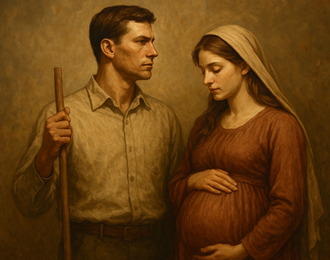Man and woman: So much more than tradition
06-10-2025 - Posted by Geert-JanOriginally posted on October 01, 2025 - by Andre Piet
A little-known young man, Davey Verbeek, recently voiced support for a traditional division of roles on a Dutch television dating show: the man as breadwinner and the woman primarily with the children. In itself, not a shocking idea – this was the norm for generations. But the reactions were fierce. As if stung by a wasp, the (left-wing) media pounced on it.
What stands out is how the much-praised “inclusivity” turns out, in practice, to be selective. Every alternative lifestyle or viewpoint is embraced – as long as it is not the traditional one. That is where tolerance ends, and people become downright sectarian and judgmental. And predictably, the comparison is made with Andrew Tate, known for misogynistic and even violent statements. In this way, the caricature is quickly drawn, and the discussion is effectively shut down from the outset.
At the same time, the defense of a purely traditional division of roles also falls short. Because the question is not whether something has always been so, but what it is based on. Scripture teaches that man was created in God’s image: “And Elohim created man in His image; in the image of Elohim He creates him; male and female He creates them” (Genesis 1:27). That is why, as Paul explains, the man is the image and glory of God, while the woman is the glory of the man (1 Corinthians 11:7). Incidentally (but this aside), the Image of God in Scripture is always Christ (Colossians 1:15). This means that the man represents God as Creator, while the woman represents creation. That is not inferior – on the contrary! Both “roles” are complementary. One cannot exist without the other. Creator and creation are essentially distinct, but just as much related to one another.
That is why the Bible speaks of God as Father and consistently in male terms such as He and Him. He is the First, the One who initiates, provides care, and gives direction. Creation, on the other hand, is presented as feminine, receptive. Also as a woman who is pregnant and joyfully expecting new life (Romans 8:22). The man thus represents the Creator; the woman represents the creation that was made by Him and finds its fulfillment in what she receives from the Man. It is typology in its purest form.
In this lies the foundation of the relationship between man and woman. It is not an arbitrary tradition, but a deeply rooted reality anchored in creation itself. Whoever loses sight of this falls either into caricature or into empty traditionalism – a defense based at most on pragmatic reasoning or on how nature happens to function, but lacking any spiritual substance.
Only where the man reflects the Creator and the woman reflects the creation does the relationship truly come into its own.

 English Blog
English Blog